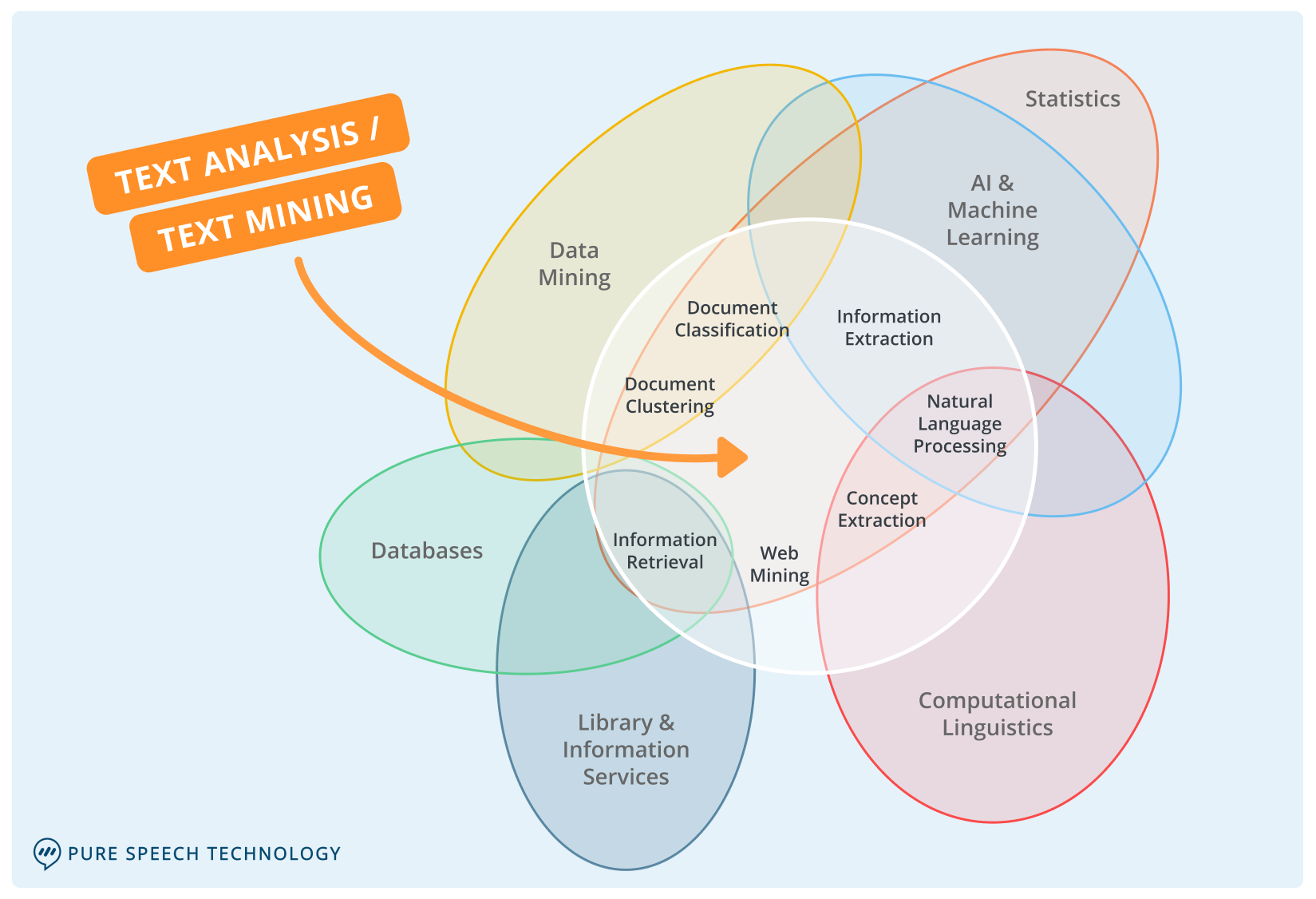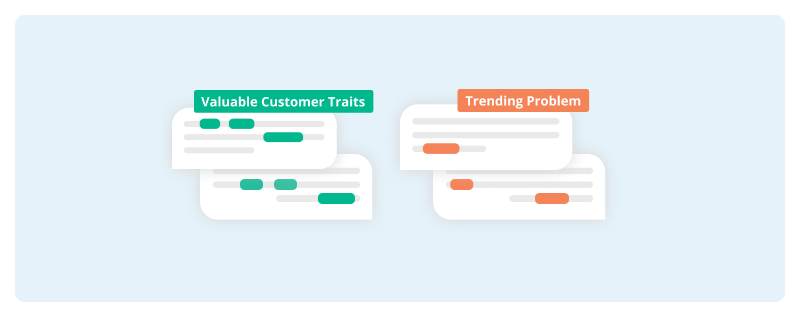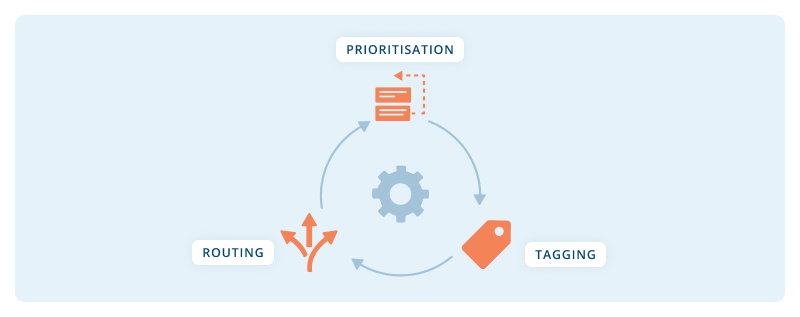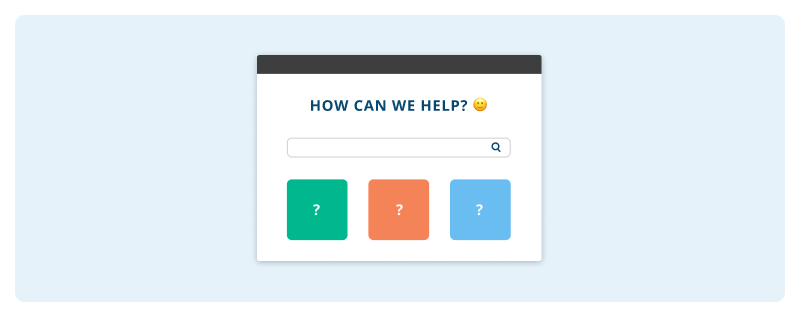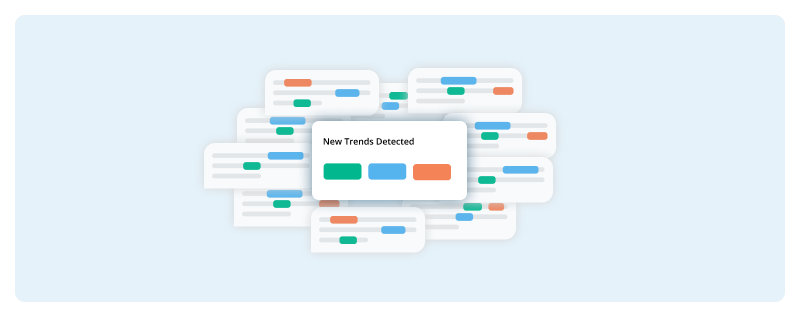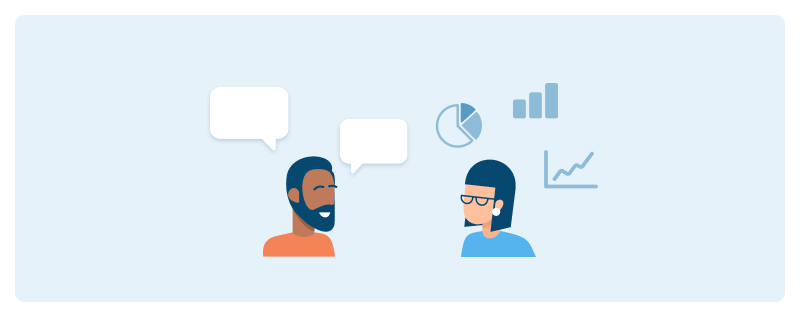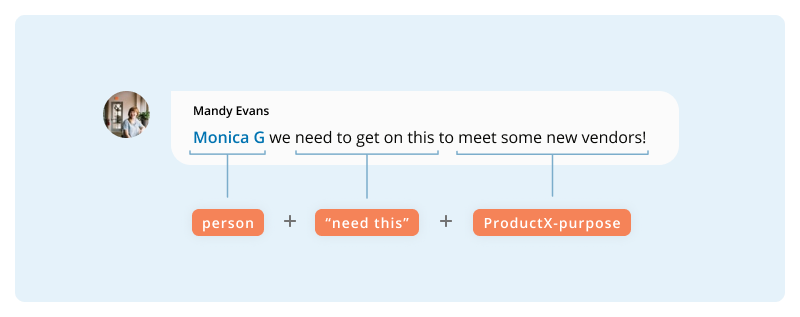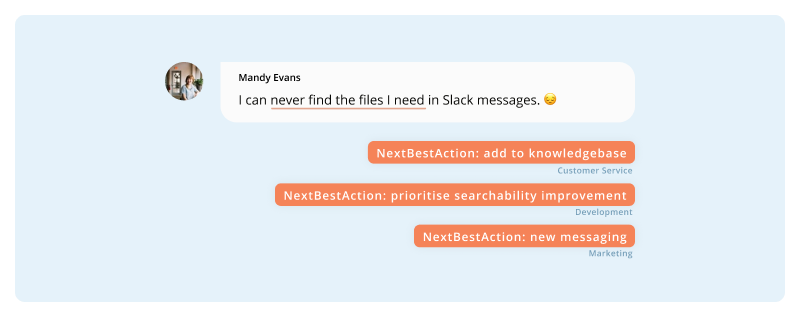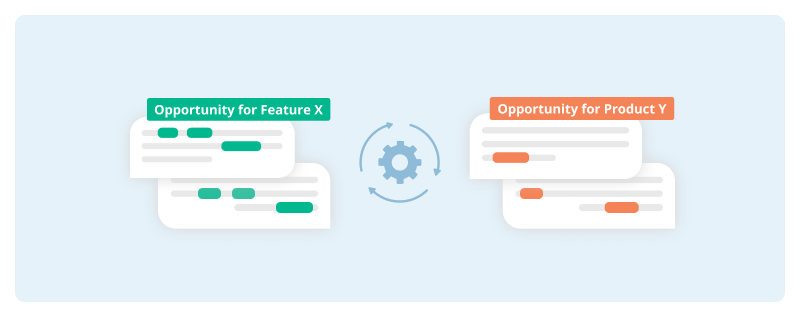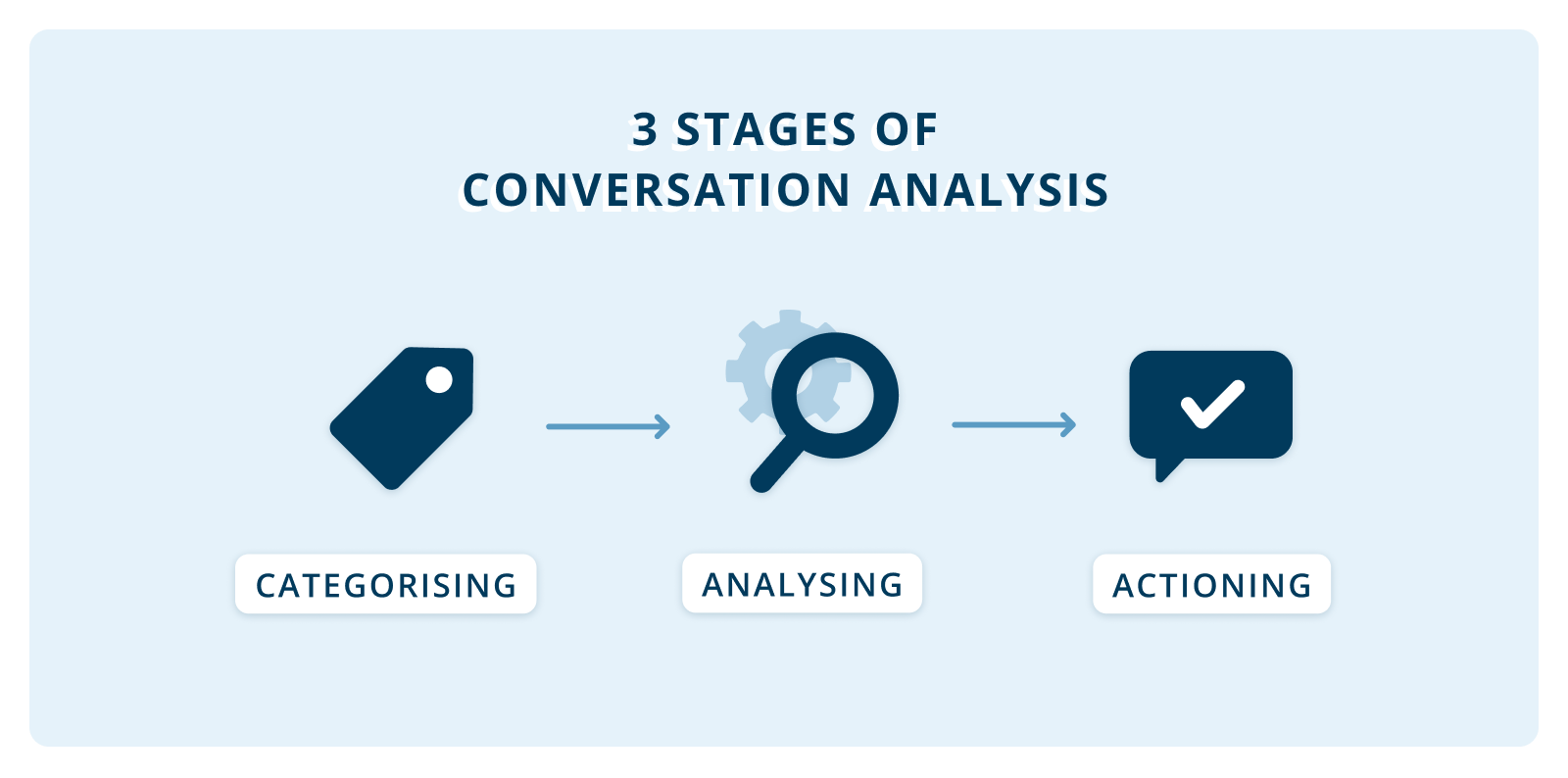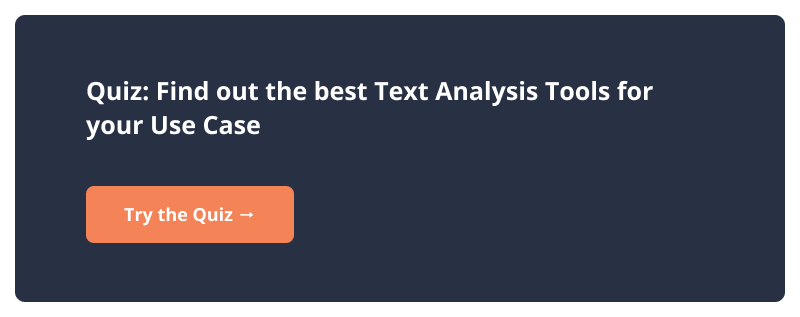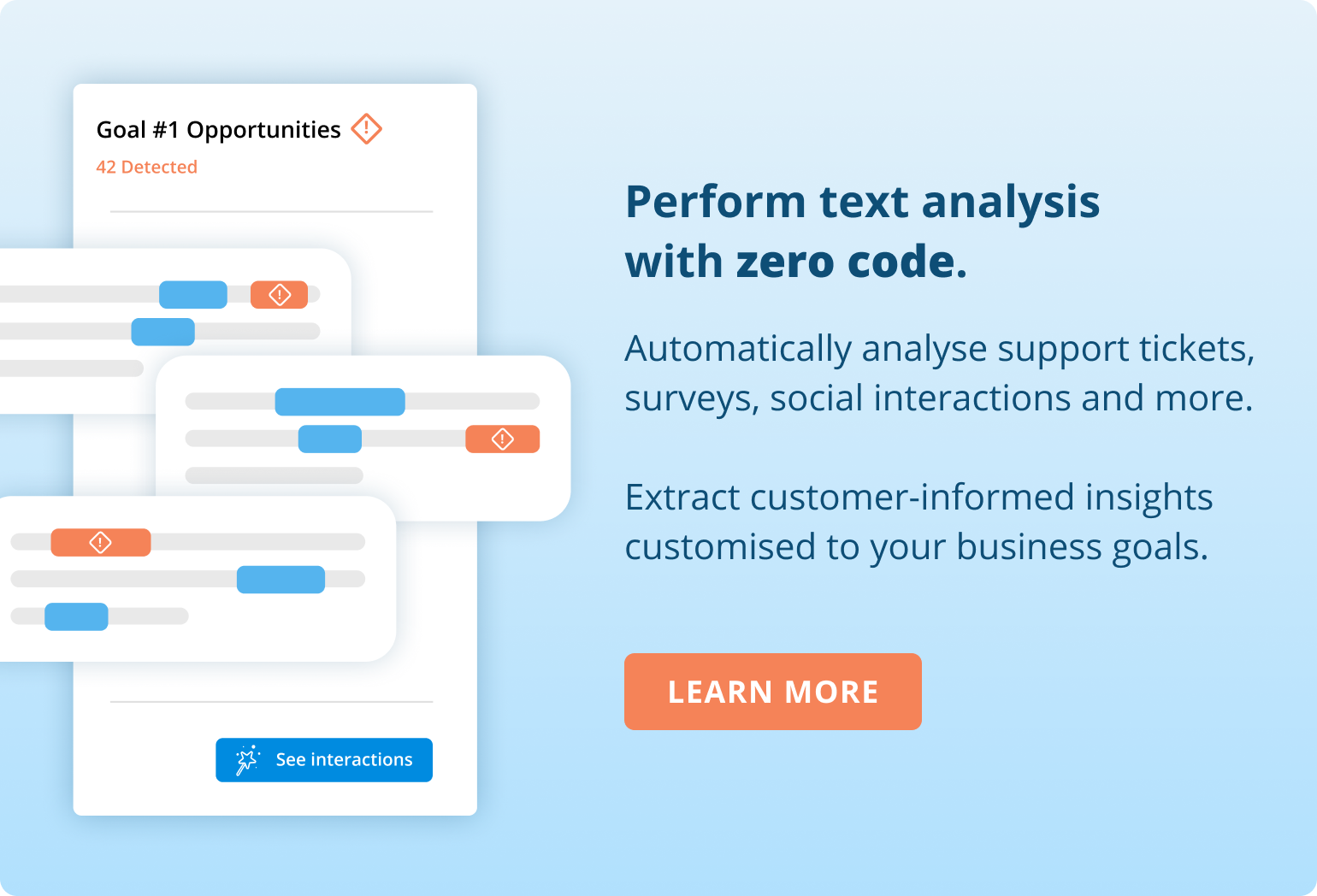A Guide: Text Analysis,Text Analytics & Text Mining
Traditionally, businesses have used their presence in brick and mortar stores to understand their customers – how to attract, engage and delight them.
However, as we move our relationships online with digital channels as the main points of interaction (particularly with worldwide WFH and social distancing measures brought on by COVID19) , that same ability to understand customers is compromised in this distanced state.
It’s not that we’re interacting with them less either. In fact, it’s the opposite.
Businesses are interacting with customers more than ever. Most businesses feel the pressure to be omnichannel and omnipresent. The digital nature of the relationship also means that every click, every payment, every message can be tracked and measured.
So, what’s the problem?
It’s precisely because there is so much information that we struggle to truly know our customers. Information overload. Analysis paralysis. We miss crucial insights because there is simply so much.
Here’s where text analysis comes in.
Text analysis helps businesses analyse huge quantities of text-based data in a scalable, consistent and unbiased manner. Without the need for excessive resources, it analyses data and extracts valuable information, leaving companies free to action on those insights.
Given 80% of business information is mostly unstructured textual data, this form of intelligent automation has become crucial for the modern enterprise to continue attract, engage and satisfy customers while staying ahead of the competition.
In this guide, you will find an overview of text analysis, how it’s used in business and some tools to get you started. Feel free to jump into the sections you’re interested in:
Definition: What is Text Analysis?
Text Analysis is the process of analysing unstructured and semi-structured text data for valuable insights, trends and patterns.
It is typically used in instances where there is a need to process large volumes of text-based data for insights, but would otherwise be too resource and time-intensive to be analysed manually by humans.
- Some instances where text analysis would be used include:
- Looking into the last 3 years of support tickets for trending customer concerns over time
- Analysing 1,000 customer surveys for new product launch feedback
- Finding the most impactful topics to build into your chatbot or knowledge base
In all these cases, text analysis methods would outperform humans. More than just being less time and resource heavy, the final insights are also more consistent with fewer human errors or biases interfering with the process.
As such, many organisations across all industries are using text analysis methods to gain quantitative and qualitative understanding of their text datasets. These are then used in conjunction with data visualisation tools to better translate the information into actionable insights for informed decision making.
Venn diagram showing the intersection of Text Analysis (or Text Mining) with six related fields: statistics, AI and machine learning, computational linguistics, library and information services, databases and data mining. Source: Practical Text Mining and Statistical Analysis for Non-Structured Text Data Applications by G.Miner et al.
What is the difference between text analysis, text mining and text analytics?
What is the difference between text analysis and natural language processing (NLP)?
Natural language processing is actually a subset of the broader text analysis field, which is why the difference between the two can often be hard to comprehend.
Let’s start with the definitions of text analysis and natural language processing.
Text analysis is about examining large collections of text to generate new and relevant insights.
Natural language processing (NLP), or more specifically, natural language understanding (NLU), helps machines “read”, “understand” and replicate human speech.
In the process of text analysis, various analysis methods are used to derive insights, and natural language processing is one of them. NLP is actually an interdisciplinary field between text analysis, computational linguistics, AI and machine learning.
The key difference between text analysis and NLP lies in the goals of each field.
Text analysis aims to derive quality insights from solely the text or words itself. Semantics in the text is not considered. It answers questions like frequency of words, length of sentence, and presence or absence of words.
On the other hand, NLP aims to understand the linguistic use and context behind the text. Here, grammatical structures and semantics are analysed. It answers questions like the intention behind a sentence, people’s linguistic habits and even classify which of your emails should go into the Primary, Social, Promotions or Updates tabs.
The two are often used together to provide both a numerical and contextual understanding of human communications.
So, how are these used in business? The next section will cover use cases and applications of text analysis.
What are the applications and use cases of Text Analysis?
Applications of text analytics are far and wide, and can be applied anywhere where text-based data exists.
Whether it’s customer feedback, phone transcripts or lengthy feedback surveys, text analytics helps teams make quantitative and qualitative sense from text data with relative ease.
Since 80% of business information is unstructured, primarily in a text format, analysis of text is useful in all functions of a business.
Let’s take a look at some of these applications:
Text Analysis for Customer Service Teams
With the amount of customer communications, it’s a no-brainer that text analysis methods are incredibly useful for customer support teams.
Customer service teams are often the most strained, with some of the highest turnovers in any company and face a multitude of stressors handling high volumes of customer interactions in any given day.
By adopting text analytics, Service teams can automate much of their mundane tasks like researching, updating, routing and reduce time spent on repetitive questions. Instead, they will enhance their ability to outperform NPS, satisfaction and CSAT KPIs with the support of NLP, machine learning and AI.
So, how would text analytics for customer service work exactly?
Use the toggle below to skip to the use cases you’re interested in, on keep reading 🙂
Customer Conversation Analytics and Insights
As the dominant medium of communication between businesses and customers, customer conversations, whether from emails, support tickets, social media or chat, provides a wealth of information for understanding customer needs and contributing to business growth.
- Within these conversations lie valuable insights to questions like:
- What techniques and phrases have top-performing customer service representatives used to outperform their KPIs compared to others?
- What have been the biggest customer trends each month for the last 5 years?
- Where are key moments in customer interactions to maximise retention?
All businesses who communicate with their customers have access to this knowledge. However, not many use it, let alone are able to extract it.
This is where the magic of text analytics comes in.
With text analysis tools and techniques, customer communication data can be digested at scale and analysed to find data-driven insights for customer service teams to outperform their KPIs.
Want to know what top-performing agents are saying to keep high-value customers? Instead of filtering by high-value customers and high CSAT scores, then going through thousands of their conversation logs, text analysis does the hard work for you.
Information extraction techniques identify the products, services, keywords and phrases top-performing representatives use effectively in these conversations. Micro-categorisation techniques uncovers the detail which allows you to find the sequence or pattern in which these phrases or keywords are used to produce customer-satisfying results.
Without extensive resources or time, customer service teams can find winning phrases, keywords, language, tone of voice and the combination of these to produce stellar results.
Early Detection of High-Value Customers and Customer Problems
The ability to detect leads or customers who are like your best customers is incredibly important for any business that wants to do well. Equally useful, is the ability to quickly nullify any potential problems that could escalate.
Do you know what’s even better? The ability to detect early on.
As the intermediary between customers and the company, customer service teams are best positioned to prescreen for valuable customers and customer problems.
- Within conversations, you can easily access insights answer questions like these:
- What are some communication patterns indicative of high-value leads and customers?
- Which customer breakout topics do we need to tend to quickly to prevent brand damage?
- Which channels do customers use for different issues, and how do we shift our resources to better manage their preferences?
Detecting potential customer problems before they’re big issues is a common use case for text analytics in customer support. Simple clustering and topic modelling techniques can help teams address these issues in real-time.
But, how will it work for identifying valuable customers?
Traditionally, identifying ideal customers go by metrics like customer lifetime value, purchase frequency, advocacy and so on. But these are not the only traits they share.
With a combination of text analytics techniques, you can find patterns for their pre-purchase path, contact preferences and even similar sequences in their word and phrase combinations in their communications.
These can all be found in customer service tools and communications.
Using micro-categorisation, nuanced meanings are attached to small sections of text, letting customer service teams attach flexible, yet detailed interpretations of the data for extensive analysis results. Clustering and topic modelling techniques then use these comprehensive categories to find trends and relationships to reveal data-backed insights to reveal valuable customer-identifying patterns.
What’s left is patterns and identifying traits that help target and prioritise high-value customers to achieve team KPIs.
This process would have been horrifyingly resource-intensive, but with text analysis, deep-diving into already available data to find KPI-smashing insights is not only faster, it is also more accurate and scalable.
Automate Ticket Routing, Prioritisation and Tagging
It’s no secret conversation handoffs are frustrating for customers, but most skip over how equally hair-tearing it is for customer service teams.
Inefficient or outright incorrect routing and prioritization of tickets create unhappy customers who lash out at employees. The necessary emphasis on speeding through as many tickets as possible also does not promote quality post-interaction work (wrap time) that helps with conversation analysis.
At this point, no one is winning.
- Enter, text analytics. Here are 3 ways it can help ticket automation in support teams:
- Automate ticket routing to the appropriate representative based on the customer, problem and urgency of the ticket contents
- Prioritise tickets based on automatically detected urgency and sentiment
Reduce post-interaction work and conversation analysis with automated conversation tagging
The benefits to automating ticket routing and prioritisation is evident, but is it necessary to automate tagging?
Absolutely.
Automated tagging helps reduce time-consuming wrap time after customer interactions. The global average wrap time is 6 minutes. That’s 6 minutes of valuable employee time spent completing data entry and acting as a human router – after every conversation.
Even more importantly, tagging a key foundation to extracting value during conversation analysis. Without quality and accurate tagging, the resulting analysis means nothing. Would you trust inaccurate and unholistic dataset to give you revenue-generating and customer-pleasing insights? Didn’t think so!
So, how would it work?
- Extraction. This technique helps you find topics, keywords, entities and even urgency of a ticket. Assign tags.
- Categorisation. This step gives you control to add additional company or industry-specific tags to customise the level of detail and value you want to see. Assign tags.
- NLP trains on tagged data and applies to past and future conversations.
- Monitor tagging and add new tags as necessary.
Expert Recommendations
- Human-in-the-loop approach to categorising
- Over-reliance on tools to tag your data
- Data categorised with input from multiple teams or business units
- Data only tagged by one person or team
Voice of Customer Reporting
Naturally, as the team on the customer front-lines of the company, the support teams are well-positioned to be the Voice of Customer champions for the company.
But, day-to-day managing of customer service processes and employees is already challenging enough. There’s not always enough time or resources to dedicate to finding bottom-line-influencing insights in conversations.
Here’s where text analytics lend a helping hand.
Some Voice of Customer insights that can be found in conversations include:
- What communication sequences or patterns do potentially high-value customers show?
- What are the top 5 customer concerns to prioritise for next quarter?
- Which questions or topics take a lot of the team’s resources but can easily be answered with automated methods? (like knowledge bases or chatbots)
Text analytics tools like Intent Manager largely run the analysis for you. After some human-contributed training to customise the value you want to see for your team or company, it will mine insights automatically moving forward.
On your behalf, it will work tirelessly to extract useful patterns, sequences and relationships about your customer.
Want to report on what customers are eager to see and will pay for next quarter? Text analysis techniques like extraction, categorisation and topic modelling can be used in conjunction to find trending topics, measure their frustration and estimate the value of solving the issue.
Want to increase service team efficiency by introducing an automated chatbot for tier 1 enquiries? Text analysis methods can give you data-backed information for how many times these enquiries were raised, how often they were raised and how many interactions it takes to solve them. Better yet, it gives you data for which topics to start training your chatbots in, exactly what training data to use, and all the information it needs to provide automated responses.
That’s most of the work cut out for you.
These insights can then be exported to data visualisation platforms to make reporting more aesthetically pleasing and easier to comprehend in meetings.
Voice of Customer reporting is simplified with text analytics. It helps create reliable, data-backed and direct-from customer insights, and it certainly doesn’t hurt your standing as the company’s Voice of Customer champion 😉.
Simplify Knowledge Base Creation & Maintenance
Knowledge bases are increasingly important as customers and employees alike shift preferences towards self-service and support teams try to automate less complex tasks to free up agent time.
Whether it’s internal or external-facing, 3 key factors determine the success of a knowledge base:
- Relevance – users need to be able to find questions to the most common and pressing issues that shouldn’t require agent intervention
- Clarity – users need to understand the definitions, instructions and explanations to resolve their issue
- Searchability – users need to be able to find the information easily, effortlessly and quickly
Whilst the concept and benefits of a knowledge base are easy to grasp, the actual creation and maintenance can be an enormous task.
Do you know the three main topics that customers ask about that shouldn’t require agent assistance? Yes? Great!
Do you know the top 5 most commonly asked questions in those topics? Yes? Fantastic!
Do you know how top support reps respond such that the customer understands and is satisfied? Usually, there’s a lot of thinking faces here 🤔.
Having the answers to these 3 questions are essential to creating a knowledge base that is beneficial for the customer and for the company.
Having relevant core topics helps users navigate to find answers. Including the most commonly asked questions help reduce precious agent time spent on answering menial enquiries. Answering questions in easily comprehensible language and structure is fundamental to the usefulness of a knowledge base.
Clearly, this is a lot more work than most teams signed up for.
The good news is, the entire process can be sped up with text analysis!
- Using text analytics on historical customer communications, you can find:
- Core customer topics that can be addressed in self-service knowledge bases
- Most commonly asked questions in each of those topics
- How answers in the knowledge base should be worded and structured for ease of comprehension
Curious how text mining helps create better knowledge bases? Let’s take a look at how it contributes to clarity as an example.
Using information extraction and clustering techniques, we’re able to find the vernacular customers use to describe their problems. This allows teams to use the language they understand and search for, to help them find answers in the knowledge base.
Furthermore, topic modelling and micro-categorisation techniques can be combined to find related enquiries customers may have when they ask about a particular topic, helping create navigation links and resources for well-rounded problem resolution.
Afterall, if a user only resolves half their issue with self-service, they will still have to speak to a human to resolve the rest, defeating the purpose of a self-service channel.
Text Analytics for Marketing Teams
Being in the business of attracting, engaging and delighting customers, marketing teams benefit greatly by knowing as much as they can about their leads and customers.
Marketing needs to know what pains they’re experiencing, where they hang out, why they feel a certain way about your product or service, and much more. Immediately, some problems come to mind:
- How do you get inside their thoughts and their shoes? And;
- How do you capture so much valuable data without being overloaded?
Using text analytics helps ease the problems these two issues cause.
To get inside the mind and shoes of a customer, companies usually get to know them in the form of surveys, interviews and feedback. These methods are all great, but what is usually overlooked, and is actually feedback presented in its most unbiased and uninfluenced form, is customer communications.
Customer communications can come in all sorts of shapes – social media comments, private messages, support tickets, phone transcripts, emails and live chat conversations – just to name a few of the biggest text-based datasources.
Given enough data and some NLP training, text analytics help marketing teams process the masses of communications and transform them into useful insights for customer satisfaction and revenue generation.
As for how text mining helps with information overload, its strength lies in its machine learning and AI enhancement. Consistently and tirelessly, marketing teams can process masses of communications at scale, reducing the information overload clouding valuable insight extraction.
Sounds handy, right?
Let’s dive a little deeper into some tangible marketing use cases for text analysis.
Find New Brand Awareness and Targeting Strategies
Using readily available historical customer interactions, text analysis techniques can be used to extract valuable insights for new ways to target customers and raise awareness.
Customer interactions happen because customers want to share a point, whether it’s a complaint, a compliment, an opinion or a request. The important factor here is that they have gone out of their way to reach the company to make a point.
This makes them valuable to marketers to gain an insight into their customers’ world – what they’re worried about, experiencing, feeling and are planning to accomplish with your product or service.
It’s a pity that not many companies see this as a fantastic marketing tool.
Part of the problem stems from the sheer enormity of interaction volumes. It’s incredibly difficult going through millions of historical communications from 10+ channels and trying to find connections and patterns. Further, its qualitative nature also doesn’t help, since most companies prefer being quantitative with their reporting and achievement metrics.
Here’s where text mining becomes incredibly handy. It reports on both a quantitative and qualitative level, and is easily scaled to process millions of interactions.
Text analytics, being used on customer communications for marketing insights can answer questions like:
- Is there a miscommunication between a customer problem and our messaging, and how can we use their words?
- How many leads are being exposed to our brand via a particular channel, medium or influencer? Does their weighted opinion of the brand justify an investment or further investment in the channel, medium or influencer?
- What is the evolution of customer satisfaction in their interactions throughout their customer lifetime? And, at what point do I need to target to win them back?
Curious to see how this works? Chat to one of our text analysis experts →
Early Customer Trend Detection
Being on top of customer trends has always been important to marketing teams. The problem with staying on top these days, is the sheer amount of new things to keep up with.
What’s the next new channel? Who’s the newest influencer? Where can new leads come from?
Thankfully, some of these questions can already be answered by existing customer and leads, in your communications.
Finding out what channel they came through to find out about your brand, which influencer converted their trust for your products, and where they have heard about your services before helps you find others like them.
This is not a recommendation to mass-interview all your leads and customers, but to dig through all your past interactions, where most of this information likely already exist.
- By using text analysis, marketing teams can answer questions like:
- What channels are my customers and leads interested to try? Does it make sense for my brand to have a presence there?
- Which influencers do my customers trust and how can I position the brand to align with that?
- What topics are my customers interested in or concerned about? How would they like to see it addressed?
Mining past and ongoing interactions helps marketing teams monitor the customer chatter, and stay ahead of emerging topics. This lead in customer insight allows marketing to focus on creating customer-supported and data-driven marketing decisions, without being overloaded by information and analysis.
Seize Lead-to-customer Opportunities
Good marketing teams can identify a few instances where leads convert to customers. Great marketing teams find leads in those stages to optimise conversions. World-class marketing teams? They find the patterns and behaviours that signal a lead-to-customer conversion so they can nurture along the way.
How do you get from good, to world-class?
One of the most tangible methods (obviously data-backed 😉) is text analysis. That is, analysing customer text data, like conversations, social media interactions and support tickets, to identify patterns of communication that people in the consideration stage share.
This can be a pattern of communication channels they use, the types of questions they ask and even the sequence of word choice in their interactions.
Text analytics helps find these unique nuances and patterns in communication style in your customers, to better identify future leads that are at the sweet conversion point.
- Some other questions text analysis can help marketers answer include:
- What sequence of questions and responses do marketing qualified leads ask that should really classify them as sales qualified?
- Is there a pattern of communication that identifies a potential high-value customer?
- What set of qualities do I use to assess a lead’s potential customer lifetime value within interactions?
Text analytics takes away the human bias, error and inevitable mind-blowing boredom from digesting all these conversations to extract identifiers of lead value. What’s left is actionable insights the marketing team can execute on, making the most of lead-to-customer opportunities.
Marketing Reports on both the Quantitative and Qualitative
Marketing reports for customer experience are typically centered around quantitative numbers, for example: open rate, engagement ratio, churn and retention. It’s no secret these metrics are often unable to capture the full picture of the customer experience and their satisfaction or dissatisfaction.
This gap created results from a lack of reporting on qualitative insights. These are insights that come from the contents of unstructured data sources like customer conversations, feedback and phone transcripts. Most companies only capture the numbers around these data sources: number of tickets, problem resolution time, email open rate, engagement ratio etc.
What’s more important, especially when gauging customer opinion and satisfaction with the brand, is the contents of these interactions. When customers express their happiness with a brand, what’s really meaningful is that they are expressing their opinions through words, not simply a “like” on a post.
The problem with trying to capture these qualitative sources, is the perceived inability to measure them. Marketing reports are dominated by numbers, and if expressed otherwise, dwindles the trust in the work of the marketing team.
So, how do you capture the entirety of the marketing team’s good work on customer experience, while ensuring you convey its significance in numbers?
The answer? Text analytics.
With text analytics, some of these points previously only in the realm of qualitative insights can be captured:
- Are there clusters of “customer-expressed motivations to use Product X” we hadn’t considered before?
- Is there a relationship between emotional language used when talking about Product X and customers who previously expressed negative emotions in past interactions
- What are the emotional words expressed by customers when talking about Product X?
Text analysis captures both quantitative and qualitative insights from unstructured customer data. When capturing qualitative data, it takes a quantitative approach to find patterns and sequences that sheds light on the contents of the data.
To illustrate the point, let’s say we want to report on new customer-inspired targeting strategies to try this quarter. Having used text analysis on social media comments, it was found that many customers use the sequence: “person” + we need this for/ we need to get this to + “purpose”. In a comment, this could look like: @monica we need to get on this to meet some new vendors.
Detecting this sequence across thousands of social media comments and multiple channels, text analysis tools like Intent Manager group together the top motivations as key insights as to why leads are interested in your product. This can then be used to create new targeting campaigns, or present customer data-backed proposals for new strategies.
Without needing human intervention or excessive resources, text analytics, once trained, allows marketing teams to more holistically capture the fruits of their labour for reporting, and make better data-driven, customer-backed marketing decisions
Text Analysis for Chatbot Teams
Chatbot teams face a multitude of unique challenges.
While pursuing innovation in Conversational AI against the backdrop of outdated processes and protocols in many businesses systems, they have to maximise business value, encourage adoption and fix the tangle of customer data all while still navigating the complexity of the technology.
Without a doubt, it’s one of the toughest jobs contributing to a technology that’s fast becoming a modern day business necessity.
Thankfully, text analytics help with each of these challenges. Its ability to scale pattern and insight extraction helps chatbot teams enforce the value of their work across the organisation and resolve chatbot-specific issues like intent clashes. These techniques are particularly useful for teams working with enterprise chatbots, where data is in the 100,000’s or millions.
Let’s go through some use cases for how text analysis helps chatbot teams.
Scale Chatbot Cross-organisational Value
Chatbots often start out being built for a specialised use, and when the need arises to repurpose for other teams or use cases, teams find it hard to demonstrate the same value or garner the same adoption. As a result, many teams struggle to contribute to key business values across the organisation beyond a set use or small set of goals.
Text analysis, through micro-categorisation or “tagging” methods, help other teams across the organisation understand the chatbot’s value by being able to personalise data interpretation for their particular business-unit needs.
To illustrate this example, let’s say a customer responds in a chatbot interaction, “I can never find the files I need in Slack messages”. Depending on which team you sit in, you will assign different next-best-actions “tags”.
- Customer service teams might tag: “add more comprehensive how-to search in the knowledge base”.
- Development team could then tag: “prioritise improvement of searchability for next update”.
- Marketing team may tag: “use this as customer-inspired messaging for improved search function update”.
By giving teams the ability to customise the value (and thus the ‘next best action’) to their specific needs and goals, the perceived value and adoption rates of the chatbot will naturally increase. Better yet, text analysis doesn’t need extensive coordination from the chatbot team, and instead empower other teams to create value from a channel which democratises Voice of Customer data.
Additionally, more complex cross-analysis and patterns can be drawn as teams add their interpretations to the data. Combined, they provide more opportunities to find further automation opportunities, revenue-generation ideas and customer-satisfying strategies.
Identify high-impact automation opportunities
As the chatbot team, you’re always on the lookout for ways to optimise business processes with intelligent automation technologies. The problem is, are they worth the investment, time and resources?
Why not get some customer input? They’re telling you how they will spend more, be satisfied and refer others. All you have to do is listen.
With text analytics, your team can actively listen to a plethora of customer opinions – from support tickets, feedback, social media comments and emails – without the hassle of monitoring.
Analysing customer interactions can help identify automation opportunities that are:
- Frequently mentioned or requested by customers
- Associated with negative emotions when mentioned by customers
- Priority based on the criterias or filters you choose
Whether you’re looking to understand what automation opportunities will have the most impact, or understand the concerns with particular product features, text analysis helps to sort through customer input to leave your team with data-driven, customer-backed insights to action on.
The results can also be customised to your team’s goals. With human-in-the-loop training of the NLP, your team can customise topic clustering to suit changes in focus or purpose.
Try: Discover the next impactful automation project you should work on.
Resolve frustrating Intent Clashes
Intent clashes (also known as double intent or intent conflicts) are pesky chatbot problems that stem from incorrect NLP training at the beginning of the chatbot journey.
Usually, this stems from not effectively managing the huge number of questions chatbots receive.
They are hard to detect, and even harder to identify how and where to fix, making it a costly and resource-intensive problem to correct.
With text analysis tools like Intent Manager, chatbot teams can:
- Quickly identify clashing intents
- Pinpoint the training phrases that are causing the problem
- Monitor for potential intent clashes before they happen
Without needing to dedicate immense resources to backtrack on training, then manually re-categorising phrases, text analysis techniques helps chatbot teams quickly surface intent conflicts, and provide solutions to quickly resolve the conflict.
What are some software or tools for text analysis?
Before we dive into the tools, here’s 3 questions you should ask yourself when choosing a text mining tool for your business.
1. What business values do I want to see?
It goes without saying that the most important criteria for a text analysis software should be its ability to draw business-focused value. Insights shouldn’t just be on what’s most “common” or “trending”, but should be analysed with an underlying business goal as a filter. A good tool needs to let its users customise that filter.
2. What characteristics of my text data will I need to consider?
Finding the best software or tools for your particular use case is highly dependent on:
- Types of text
- Volume of text
- Level of detail you want to see in results
- How much is already categorised, or “tagged” by humans
The types of text analysis techniques best employed for your use case will vary depending on these factors, and a slight change in each can greatly impact the techniques you should use.
3. How well will it fit into my technology landscape?
While it’s always recommended to find the best tool for the job, it’s sometimes inevitable when you have a very specific tech stack. In this case, you need to consider how well the text analytics tool will integrate. Ideally, find a tool that is technology agnostic and plays well with your stack.
These are the first questions you should ask yourself. Here’s a link to a more comprehensive list of considerations for selecting an NLP tool.
With that out of the way, let’s look at some text analysis tools, split by Beginner, Intermediate and Advanced levels of text analysis.
The Beginner Trio
- Your CRM
- Excel
- Social Listening Tools
You’d be surprised how many large companies are still using a mixture of their current tools and Microsoft Excel for analysis of communications. No doubt, this is a quick way to start analysing, but it is not scalable in the long, or middle run.
If you’re at this stage, it’s advised to quickly understand what it is that you want out of text analysis, and what you need in an analysis tool. Then, upgrade to that tool as soon as you can. The benefits are boundless. Hundreds of hours saved from all stages of the text analysis process, as well as faster business response for cost reduction or revenue generation.
The “Best Practice” Tools
- Google NLP Products — AutoML and Natural Language API
- Amazon Comprehend
- Watson Natural Language Understanding
- Azure Text Analysis API
A lot of large organisations use these tools with their conversational analysis, and rightly so. They are easy, powered by generic NLP that works across all sectors, industries and teams.
Though, the big down-side to many of them is that they mostly play well with their suite of products, and require expensive customisation, resources and training to mingle with other technologies you have in your enterprise landscape. Then, things get expensive really quickly.
Depth of analysis-wise, they’re able to pick out the elements in utterances well, but tend to be too generic for deriving deeper business-focused value.
Don’t take my word for it, you can try out Google and Azure demos on their landing page. Insert a piece of conversation, and see the results for yourself. How well do they extract relevant and specific information to drive productive action for your organisation?
The “Deep Dive” Tools
These are tools that provide more substance and meaning to your customer communications. They seek to understand conversations, all their patterns and nuances in order to provide valuable, actionable and meaningful insights.
Another reason why the experts at Pure Speech Technology prefer these tools is because they are flexible. They are unattached to a particular suite of products. Enterprises already have such complex technology landscapes. There is no need to add another tool that doesn’t play well with others.
Takeaway
In our times, the volume of communication between businesses and their customers is inevitably increasing. Being able to manage that influx of information and deriving business-driven value is becoming a clear indicator of a successful or tanking company.
As such, text analysis tools are fast becoming necessary tools in the arsenal of any business that has a future.
It provides a vehicle to democratise direct-from-customer insights into all parts of the business. Whether it’s marketing, customer support, product or innovation teams, it’s undeniable the effects direct customer insight can have on a team’s direction and impact on bottom-line profitability.
Curious what text analysis can do for your business? Send us a message, and we’re happy to provide you with some free guidance. Alternatively, get a demo to see how a text analysis tool works.
If you have questions on text analysis of Conversational AI, send us a message! Education is an important pillar at Pure Speech Technology, and we’d be happy to answer your text analysis questions.
